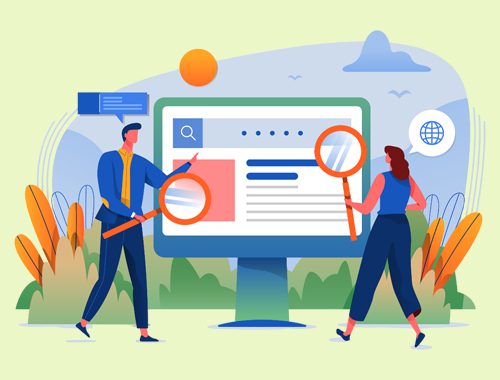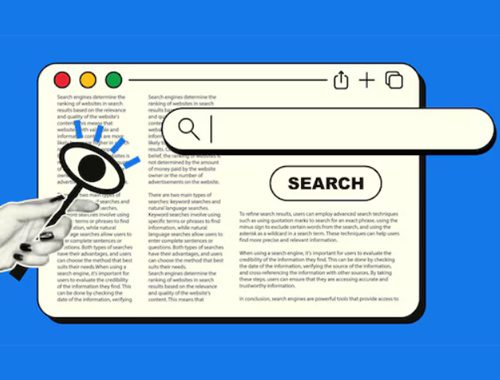How a Website design can ruin your SEO
There was a time when one of mine blog used to get a traffic of 100,0000 monthly users but now it has reduced to around 10,000. The question arises why? Why my blog has lost such big customer attention? Why my leads have gone down? Does my blog have poor navigation service? There are several questions which were running in my mind. So, I together with the team started the drill and found out that design was the root cause. Here, we would like to share the elements which caused such havoc.
Fault 1: Where is my Header Tag?
Heading Tags are used not only to increase the visual emphasis of content but also have an impact on SEO. The text in h1 tag of web page tells Google spider or any other search engine that the content in this tag is most prominent because it overlays the underlying idea of the entire web page that’s why it is important to include the main keyword within the h1 tag.
Similarly, the h2 header tag conveys the search engine that it is a subsection of header h1 tag and h3 tag is the subsection of h2. It is the simplest pitfall which has to be avoided while web designing.
Fault 2: Images instead of Important Elements
Using big images for the navigation in Search Engines can ruin the quality of your content. Also, pure textual navigation is not a good option. Here you have to compromise the use of text over images with CSS technique.
Introducing fresh pictures in the heading of your content may look impressive and outstanding, but it will hurt or can destroy your SEO. Header text is intended to highlight the relevant keywords.
We all know – ‘Content is the King in SEO’, so don’t overload it with images, if you want to get higher ranks in Google. But, if you can’t resist yourself using images then use Photo Blogs that look generous and friendly.
Fault 3: Mobile Responsive
Mobile devices have become an indispensable part of everyone’s life. According to research a human being spends most of his time with the phone in chatting, reading the news and so on. So, ignoring the mobile design of your website is the primary pitfall. Because the responsive trend in the web design will surely boost your SEO. If a site that is adaptive in all the environments with the same URL will be a sweet treat for the Search Engines and it will maximise your website rankings. Therefore, having a responsive design of your site is the smarter choice and a good idea instead of going with the contemporary design methods.
Fault 4: Frames
It’s true that some web designers are using Frames to build websites. Frames that are outdated and inevitably destroy your site SEO. It’s difficult for Search Engines to read the valuable content in games because they hide the content. Although frames sites use three HTML files instead of one, that generates conflicts with indexation.
Fault 5: Flash Pages
Starting your website with visually attractive flash and littler relevant content is surely a fire-killer for SEO. Use those large and sparkly graphics on the landing pages with one click like “Click here” tells Google or other search engines that your website is nothing but a giant advertisement. It is always recommended not to make your entire site with Flash Pages. Use Quality content on every page on your site, and you can use HTML5 i.e. is SEO –friendly, and Google successfully indexes HTML 5 content.
Fault 6: Slow page loading
The website which is loaded with dark images or graphics and built with bad coding will take much time to load. That is the kiss of death to the SEO of your website. Speedy loading pages are essential to an optimised internet site.
Fault 7: Improper Video Embedding
Well, that exact video content is the perfect way to engage the audience, but it doesn’t help in SEO. The custom JAVA media players are also not readable by the Search Engines. The best way is to link it directly to YouTube.
Fault 8: Geo-Redirection
The website which was written in multi-languages automatically uses geo-redirection that fetches the user’s location and presents the internet site in its local language. Though it is convenient, redirecting the page away from your home page will hurt SEO. It would be better that user will manually select their location.
Fault 9: Ignoring the importance of 404 Page
Building custom 404 pages is an excellent way to add numerous extraordinary ideas, but sometimes the web designers forget to include the necessary elements.
For example A return link to your website i.e. navigation feature. It will not only improve the user experience but also help in SEO. Otherwise, search engines found that your website is containing broken internal links which will reduce your rank.
Fault 10: Lack of Breadcrumbs
Text links are easy to read and a perfectly engineered breadcrumb trail will improve the overall performance of the SEO. But the web designers often forget to use breadcrumbs, which would noticeably increase the user-friendliness of the website.
In my case, I did Fault 1, Fault 2, Fault 4 and Fault 7, which led to decrement in users.
Build Website that works:
Creating an aesthetic website with a proper balance between navigation and SEO is essential. SEO must be treated as the dominant component of the web design. A web designer can create an outstanding piece or art, but it is worthless if nobody can find it.
Therefore, avoid these ten web design mistakes to make your website renowned.


